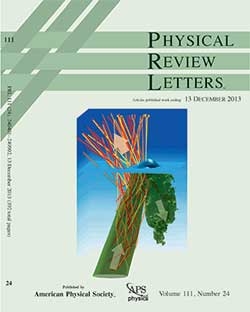Journal cover features Lawrence Livermore's intense laser interaction simulation research
For several decades, physicists have used lasers of very high power, such as at LLNL's Jupiter Laser Facility, to create extreme states of matter. By focusing such lasers to a beam as narrow as a few microns (smaller than a human hair), the laser light, compressed both in space and time, reaches intensities so high that electrons are pulled apart from their atoms instantaneously. These electrons are then accelerated to high energies by the laser. They can heat up solid materials to create warm-dense plasmas in just a few picoseconds.
Using the Lab's supercomputing facilities, the researchers simulated the interaction between an intense laser and a solid aluminum target, and discovered an important role of the part of the laser light reflected from the surface. They found that this portion, although small, can drag massive currents in the opposite direction of the incident laser. This changes how the forward electrons are accelerated and tends to deflect them in an unexpected direction. In short, this research shows that the reflection of the laser cannot be neglected, and can affect the interpretation of experiments measuring laser-electron coupling.
"I find exciting that, in a field of physics that has been extensively studied in the past decades, we still uncover important features," Perez said. "High-intensity laser-plasma interaction has a promising future as new lasers and capabilities are currently being built around the world."
The conditions created by this laser-plasma interaction are important for understanding astrophysical phenomena, ion beam generation and the fast-ignition scheme for inertial confinement fusion. This research represents a significant step toward developing a predictive capability to simulate such interactions.
The simulations for this work were carried out on the Livermore Computing Sierra cluster under an LLNL Grand Challenge allocation.
Contact
 Breanna Bishop
Breanna Bishop
[email protected]
(925) 423-9802
Related Links
Deflection of MeV Electrons by Self-Generated Magnetic Fields in Intense Laser-Solid InteractionsJupiter Laser Facility
Inertial Confinement Fusion
Tags
HPC, Simulation, and Data ScienceSupercomputer
Jupiter Laser Facility
Computing
Lasers and Optical S&T
Lasers
National Ignition Facility and Photon Science
Featured Articles









